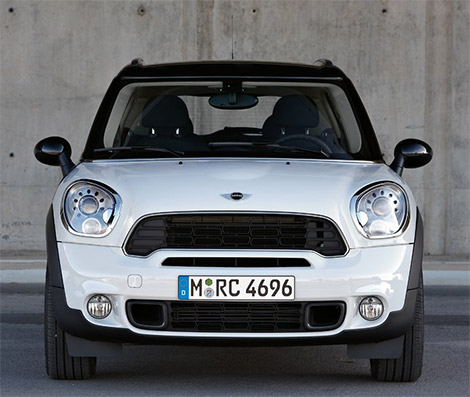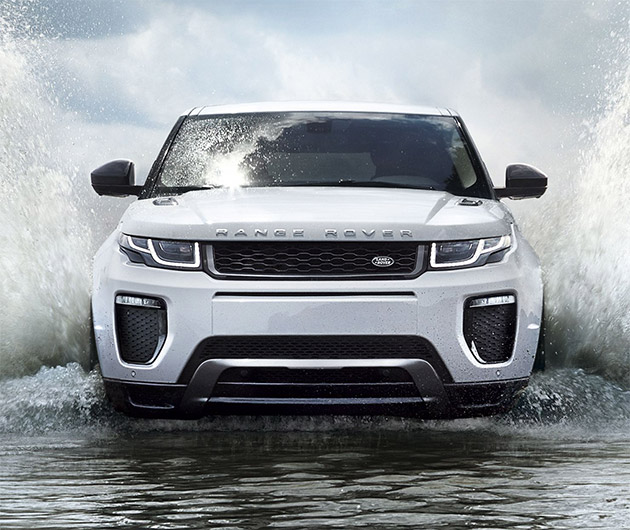2025 Audi Q5 and SQ5 First Drive: Colorado Mountain Tech Test
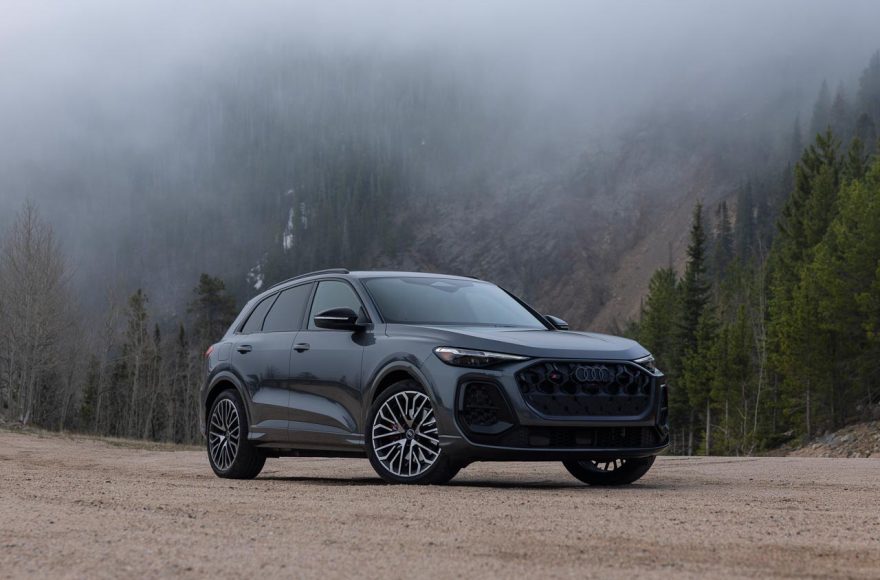
Firing up the 2025 Audi SQ5 in Aspen, Colorado, I immediately noticed how the vehicle’s technology systems came online with the kind of integration that tech enthusiasts expect from modern devices. The Digital Stage curved OLED display system illuminated with crisp clarity even in Colorado’s intense mountain sunlight, while the 362-horsepower V6 engine settled into a confident idle that hinted at the performance capabilities waiting ahead.
Our 130-mile route from Crested Butte through Buena Vista to Aspen would provide the perfect testing ground for Audi’s latest tech integration in real-world mountain driving conditions. The challenging terrain, dramatic elevation changes, and varying road surfaces would push both the Q5’s 268-horsepower four-cylinder and the SQ5’s more powerful V6 through scenarios that reveal how well technology serves actual driving needs rather than showroom demonstrations.
Digital Architecture: The OLED Advancement
The centerpiece of the Q5’s technological advancement lies in its Digital Stage system, which represents a fundamental shift from traditional automotive displays.
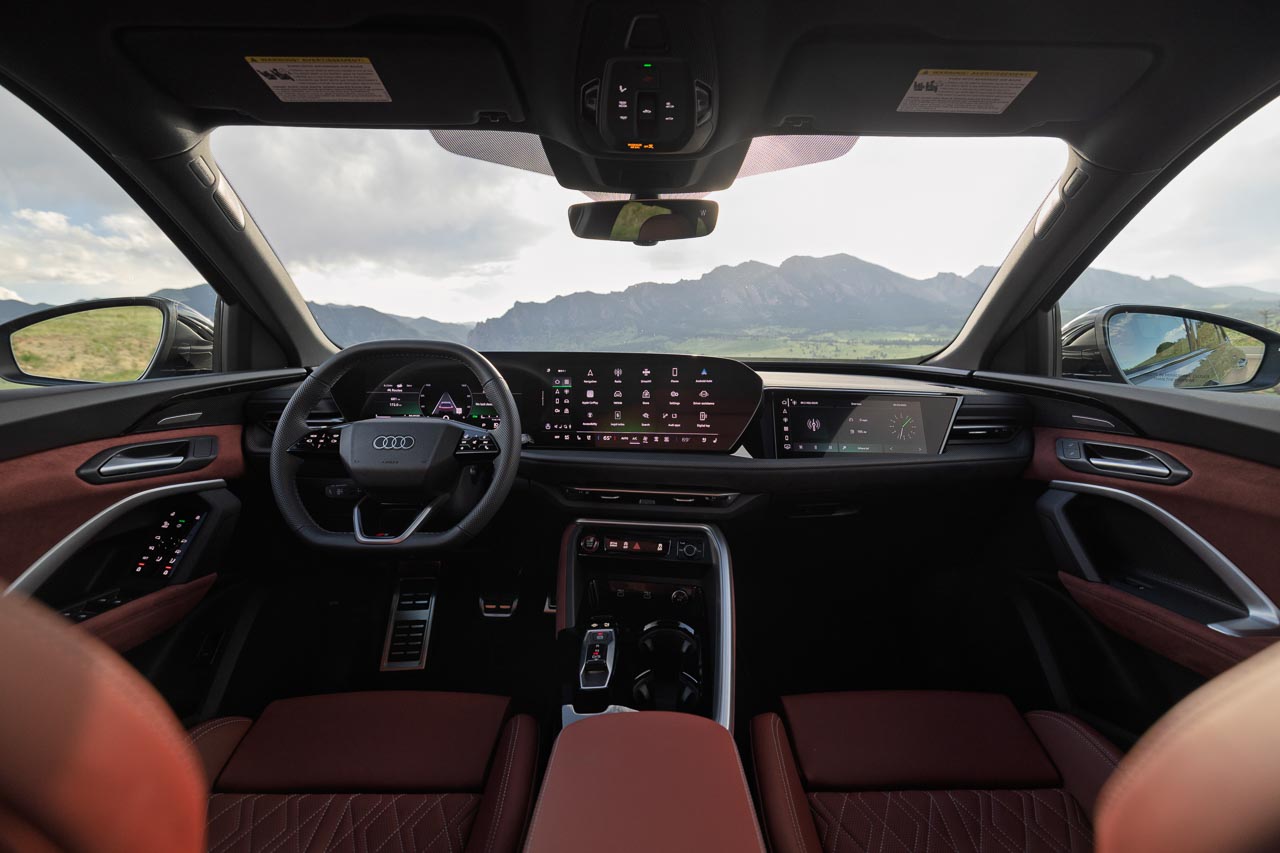
From behind the wheel, the Q5’s 268-horsepower turbocharged four-cylinder feels noticeably more responsive than the previous generation. The power delivery is immediate and linear, building smoothly from low rpm and pulling strongly through the midrange. During our mountain climbs, the engine never felt strained even at altitude, where naturally aspirated engines typically struggle. The turbocharger spools quickly, eliminating the lag that can make mountain driving frustrating. The engine’s refinement impressed throughout our drive, remaining smooth and quiet during highway cruising while developing a more purposeful note when pushed harder through mountain passes.

The SQ5’s 362-horsepower V6 completely transforms the character of the vehicle. The additional power is immediately apparent from the first throttle application, delivering the kind of effortless acceleration that makes mountain driving genuinely enjoyable rather than simply manageable.
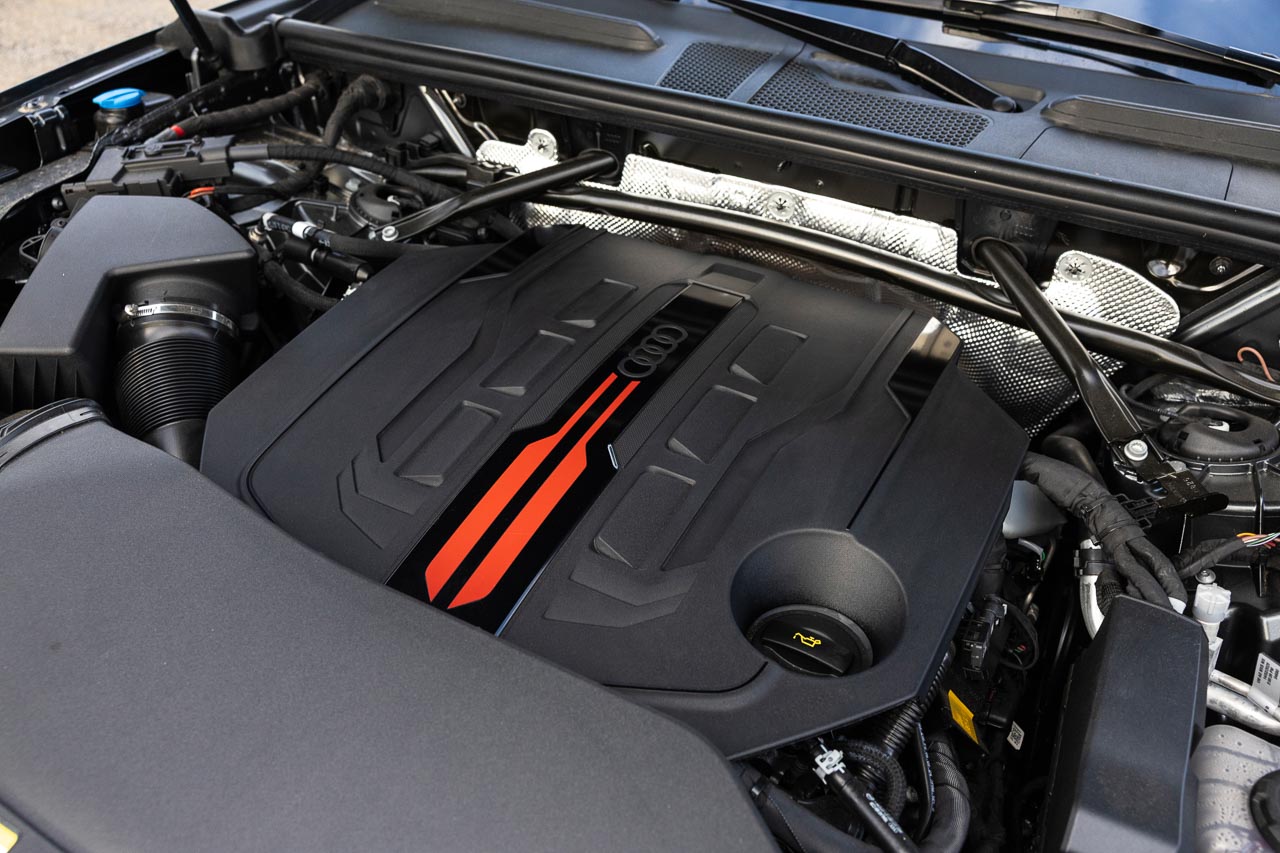
The engine pulls hard from any rpm, with a broad torque curve that provides flexibility during technical driving situations. The sound is perfectly calibrated, providing an engaging soundtrack without becoming intrusive during highway cruising. During our most demanding sections, the V6 delivered strong acceleration even when climbing steep grades at altitude, where the reduced air density typically hampers naturally aspirated engines.
The seven-speed S tronic dual-clutch transmission proves its worth during demanding mountain driving. The shifts are lightning quick in manual mode, with paddle shifters providing instant response that allows precise control during spirited driving. In automatic mode, the transmission demonstrates impressive intelligence, holding gears during climbs and downshifting aggressively for engine braking on descents.
During our mountain drive, this display technology proved its worth through consistent readability across varying light conditions. The OLED panels maintained perfect contrast whether we were driving through shadowed valleys or exposed mountain passes where traditional LCD displays typically wash out.

The optional 10.9-inch passenger display extends this digital ecosystem, allowing front passengers to access entertainment, navigation, and communication functions without interfering with driver-focused systems.
Connectivity Infrastructure: Mountain-Proof Communications
The Q5’s connectivity systems proved essential during our mountain route, where cellular coverage can be inconsistent and navigation accuracy becomes critical for safety. The vehicle’s advanced antenna array maintained strong signal strength throughout most of our journey, while the onboard navigation system provided reliable guidance even when cellular data became unavailable.
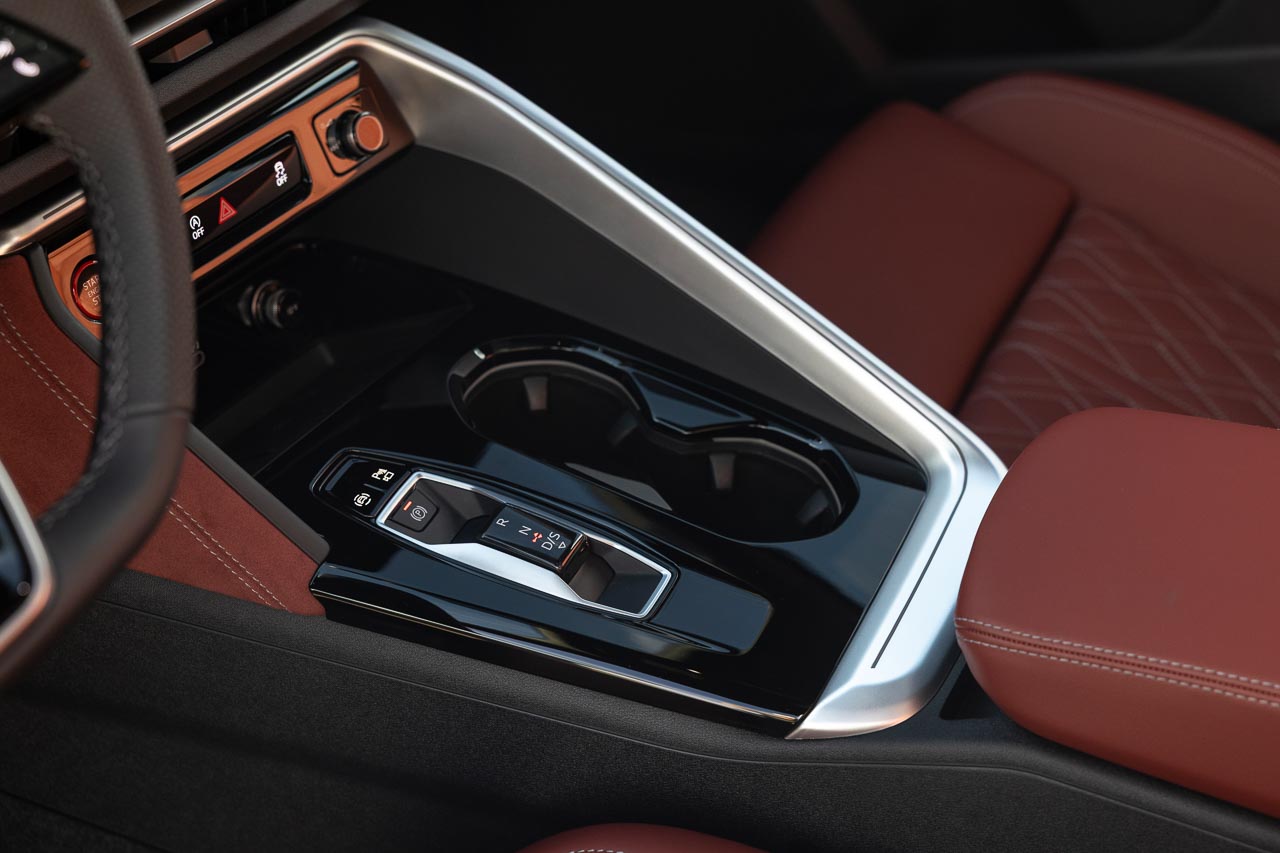
The wireless charging system delivers 15 watts of power while incorporating active cooling to prevent device overheating during extended use in Colorado’s intense mountain sunlight. This cooling capability proved crucial during our drive, as traditional wireless chargers often throttle charging speeds or shut down entirely when devices overheat in direct sunlight at high altitude.
USB-C connectivity provides considerable power delivery with front ports supporting up to 60 watts and rear ports delivering up to 200 watts combined. This specification ensures that laptops, tablets, and other high-power devices remain charged throughout extended mountain journeys. During our drive, we successfully maintained power to multiple devices including navigation tablets, action cameras, and communication equipment without any power management concerns.
The vehicle’s Wi-Fi hotspot capability maintained internet connectivity for passengers throughout most of our route, though performance varied with cellular tower proximity as expected in mountainous terrain. The system automatically switched between available carriers to maintain the strongest possible connection, demonstrating intelligent network management that maximizes connectivity in challenging environments.
Powertrain Technology: Altitude Performance
The Q5’s 2.0-liter TFSI four-cylinder engine produces 268 horsepower and 295 lb-ft of torque, representing increases of 7 horsepower and 22 lb-ft over the previous generation. The SQ5’s 3.0-liter TFSI V6 delivers 362 horsepower and 406 lb-ft, with gains of 13 horsepower and 37 lb-ft respectively. Both engines utilize Variable Turbine Geometry technology that optimizes boost pressure across the rev range for improved responsiveness and efficiency.
During our high-altitude driving, these power improvements became immediately apparent. The Q5’s four-cylinder maintained strong performance even at elevations exceeding 10,000 feet, where naturally aspirated engines typically struggle with reduced air density. The turbocharged configuration compensates for altitude-related power loss more effectively than traditional engines, maintaining consistent performance throughout our elevation changes.
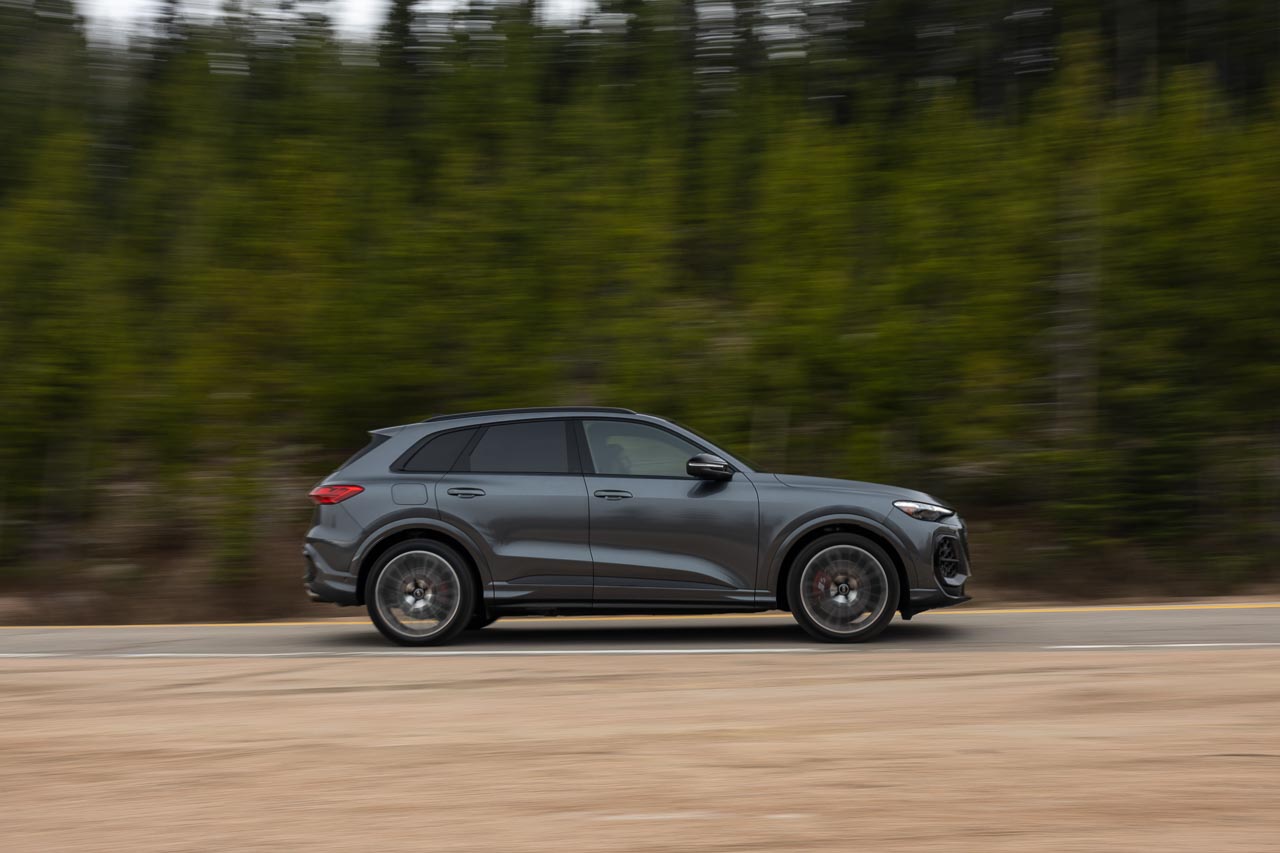
The SQ5’s V6 engine demonstrated impressive capability during our more demanding mountain passes, delivering strong acceleration even when climbing steep grades at altitude. The Variable Turbine Geometry system provided immediate throttle response without the lag that typically characterizes turbocharged engines, creating a driving experience that feels naturally aspirated despite the forced induction.
Both engines pair with a seven-speed S tronic dual-clutch transmission that delivers power to the standard quattro all-wheel drive system. The transmission’s quick shifts and intelligent gear selection proved valuable during mountain driving, where maintaining momentum through corners and managing engine braking on descents requires precise powertrain control.
Chassis Technology: Adaptive Intelligence
The Q5 features a dynamically tuned steel suspension with 18-inch wheels and all-season run-flat tires as standard, while the SQ5 includes sport adaptive air suspension that provides variable ride height and damping characteristics. This air suspension system proved particularly valuable during our mountain drive, automatically adjusting to road conditions and driving modes to optimize both comfort and performance.
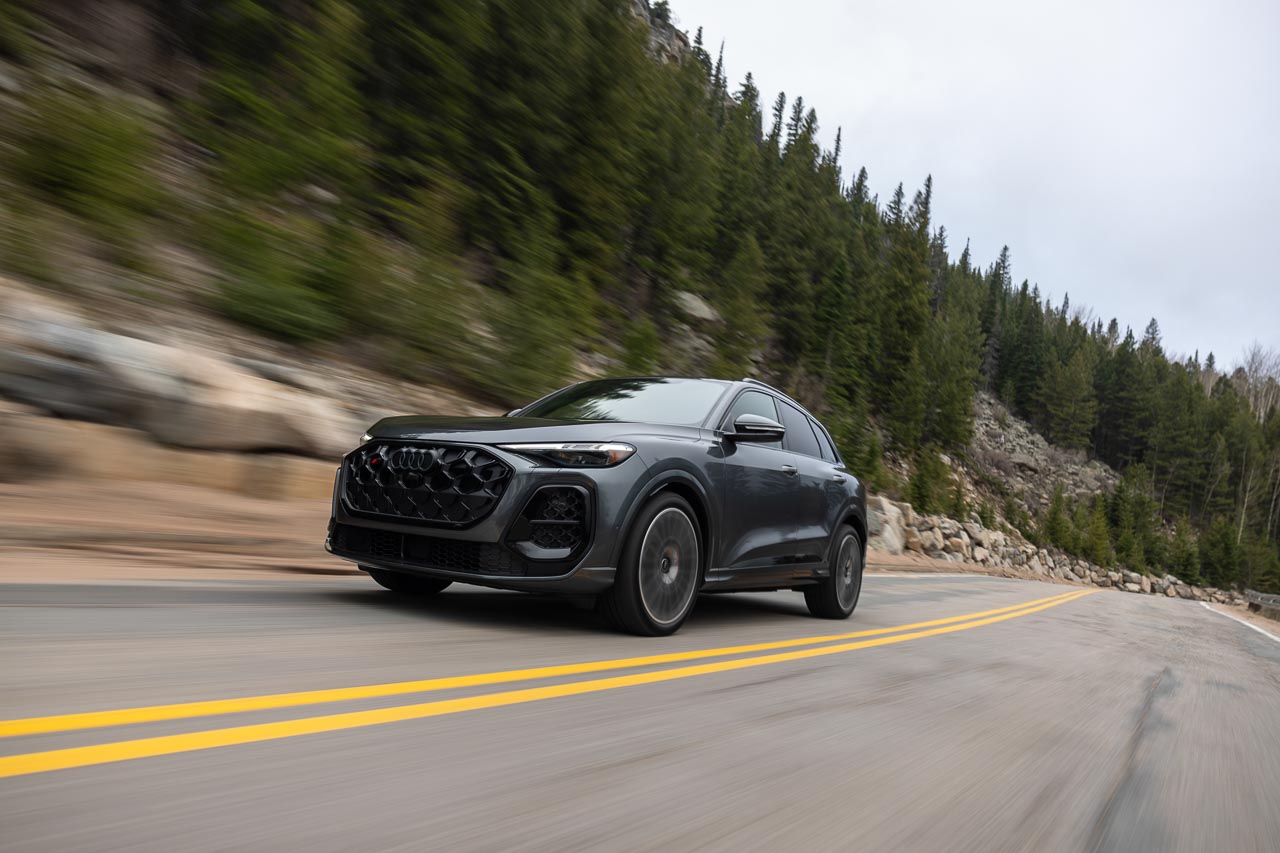
The handling characteristics of both vehicles impressed throughout our mountain route. The Q5 feels remarkably composed through corners, with precise steering that communicates road surface changes without becoming nervous or twitchy. Body roll is well controlled despite the higher center of gravity, and the vehicle maintains a planted feel even during aggressive cornering. The steering weight builds naturally as speeds increase, providing the kind of feedback that inspires confidence during spirited mountain driving.
The SQ5’s sport adaptive air suspension transforms the driving experience completely. In Comfort mode, the ride quality rivals that of a luxury sedan, soaking up road imperfections while maintaining excellent body control. Switch to Dynamic mode, and the suspension firms up dramatically, reducing body roll to sports car levels while maintaining enough compliance to handle rough mountain roads without becoming punishing. The transformation is remarkable, essentially providing two completely different vehicles in one package.

Braking performance proved exceptional throughout our demanding mountain drive. The standard brakes on the Q5 provide strong, consistent stopping power with excellent pedal feel and modulation. During repeated hard stops on steep descents, the brakes showed no signs of fade or degradation. The SQ5’s larger brakes offer even more capability, with the kind of stopping power that allows aggressive driving with complete confidence. The brake pedal feel remains firm and progressive throughout, allowing precise control during technical driving situations.
The SQ5’s air suspension offers multiple height settings that proved useful during our route. The system can lower the vehicle for improved aerodynamics during highway cruising or raise it for additional ground clearance when encountering rough mountain roads. A loading mode drops the rear suspension to simplify cargo management, which proved helpful when loading mountain gear at various stops.
The adaptive damping system continuously adjusts shock absorber firmness based on road conditions and driving inputs. During our drive through varying road surfaces, from smooth highways to rough mountain passes, the system provided appropriate damping characteristics without requiring manual intervention. The technology operates transparently, enhancing ride quality and handling without drawing attention to its operation.
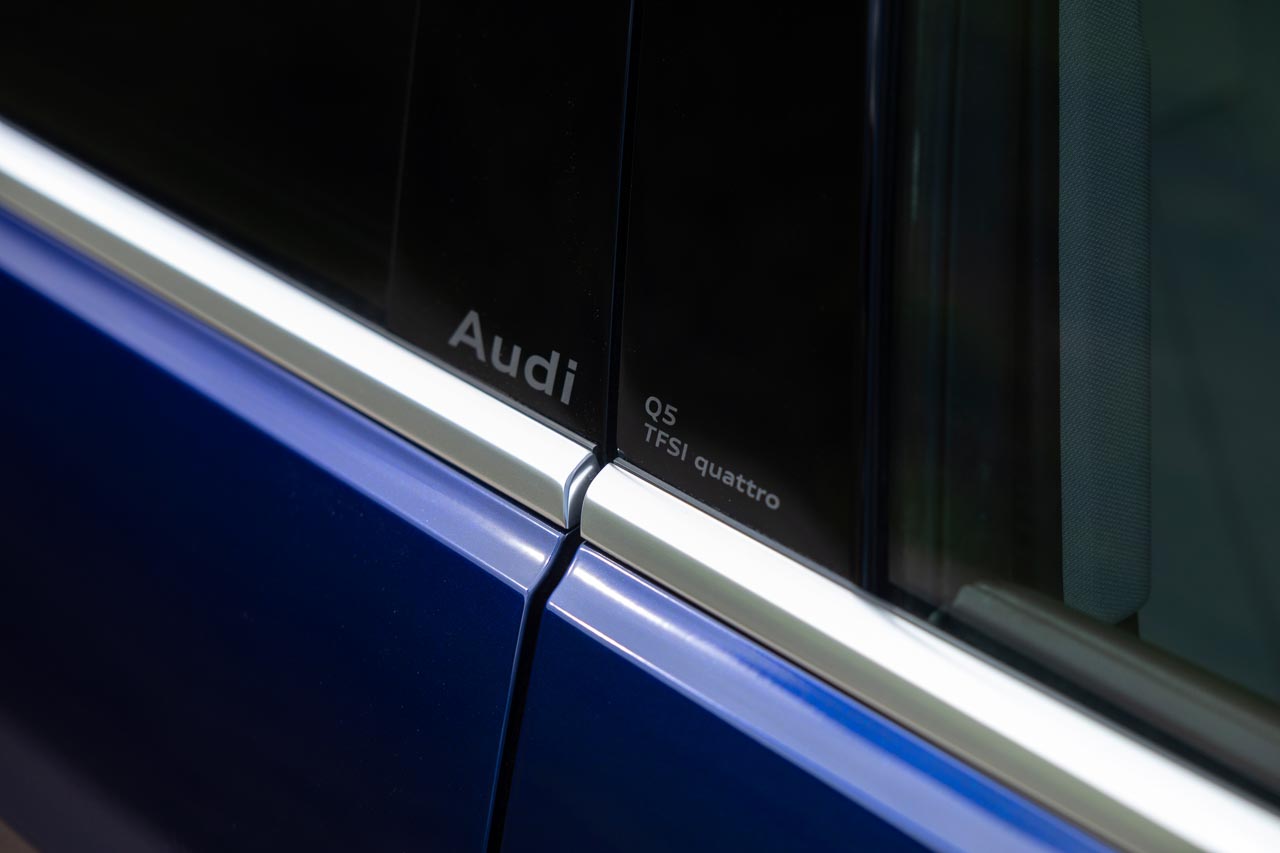
The quattro all-wheel drive system distributes power between front and rear axles based on traction conditions, with the ability to send up to 85% of torque to either axle as needed. During our mountain drive, this system provided confident traction on varying road surfaces without the intrusive intervention that characterizes some all-wheel drive systems. The technology operates seamlessly, maintaining traction without disrupting the driving experience.
Safety Technology: Mountain-Specific Intelligence
The Q5’s comprehensive safety suite proved particularly valuable during mountain driving, where road conditions can change rapidly and margin for error decreases significantly. The Matrix-Design LED headlights automatically adjust beam patterns to avoid blinding oncoming traffic while maximizing illumination of the road ahead, a capability that proved essential during our evening sections through mountain passes.
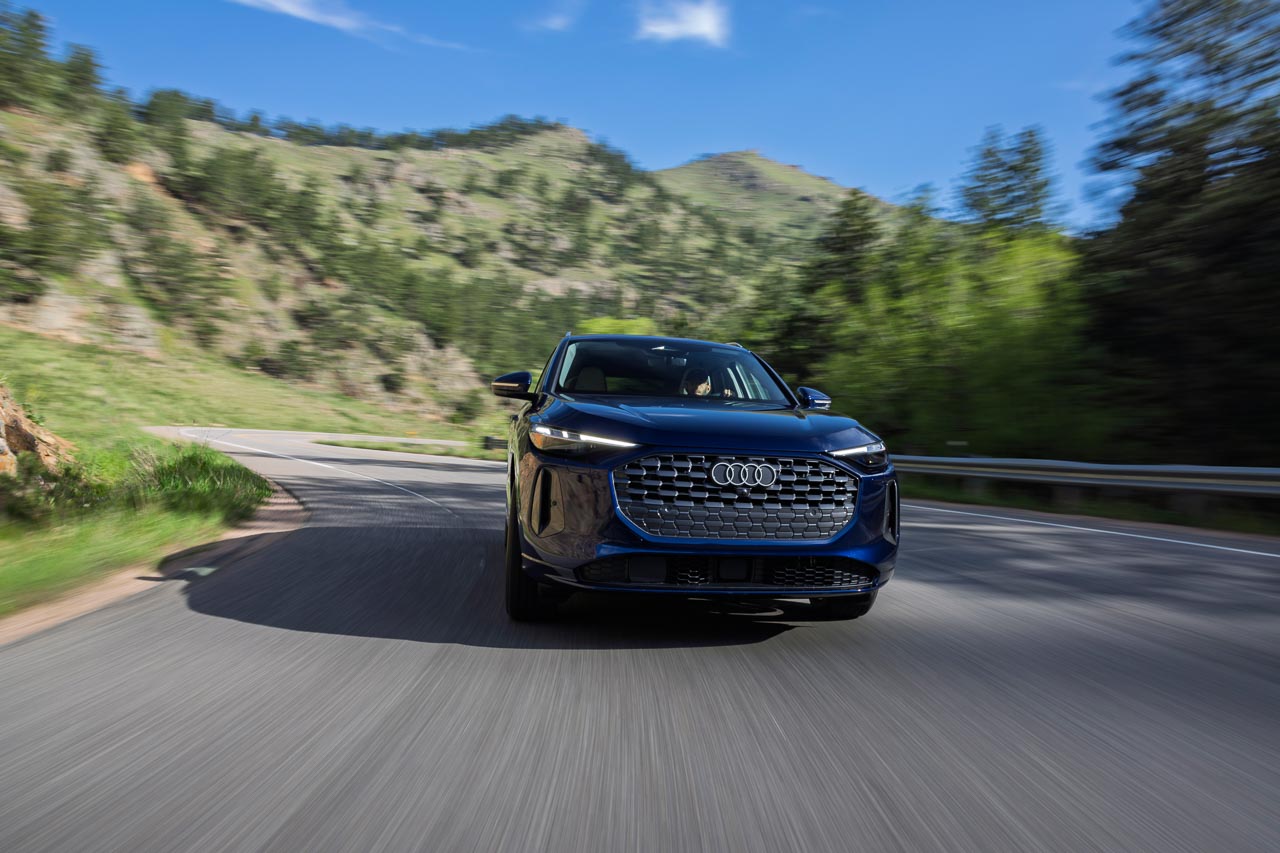
The adaptive cruise control system maintained appropriate following distances while automatically adjusting speed for curves and elevation changes. During our longer highway sections, this technology reduced driver fatigue while maintaining safety margins appropriate for mountain driving conditions. The system’s ability to recognize and respond to road geometry changes demonstrated advanced sensor integration and processing capability.
Lane keeping assistance provided gentle steering inputs to maintain lane position without the aggressive interventions that characterize some systems. During our mountain drive, where road markings can be inconsistent and lane widths vary, the system provided helpful guidance without fighting driver inputs or creating uncertainty about system intentions.
The exit warning system monitors traffic behind the vehicle and prevents door opening when hazards are detected. During our stops in mountain towns where cyclists and pedestrians frequently share narrow roads with vehicles, this technology provided valuable safety margins that address common mountain driving scenarios.
Lighting Technology: Digital Personalization
The Q5’s advanced lighting systems represent significant technological advancement in automotive illumination. The Matrix-Design LED headlights offer up to eight digital light signatures in the daytime running lights, allowing owners to customize their vehicle’s appearance while maintaining Audi’s design identity. This personalization capability extends to the available second-generation digital OLED taillights, which feature customizable signatures that pair with the front lighting selections.
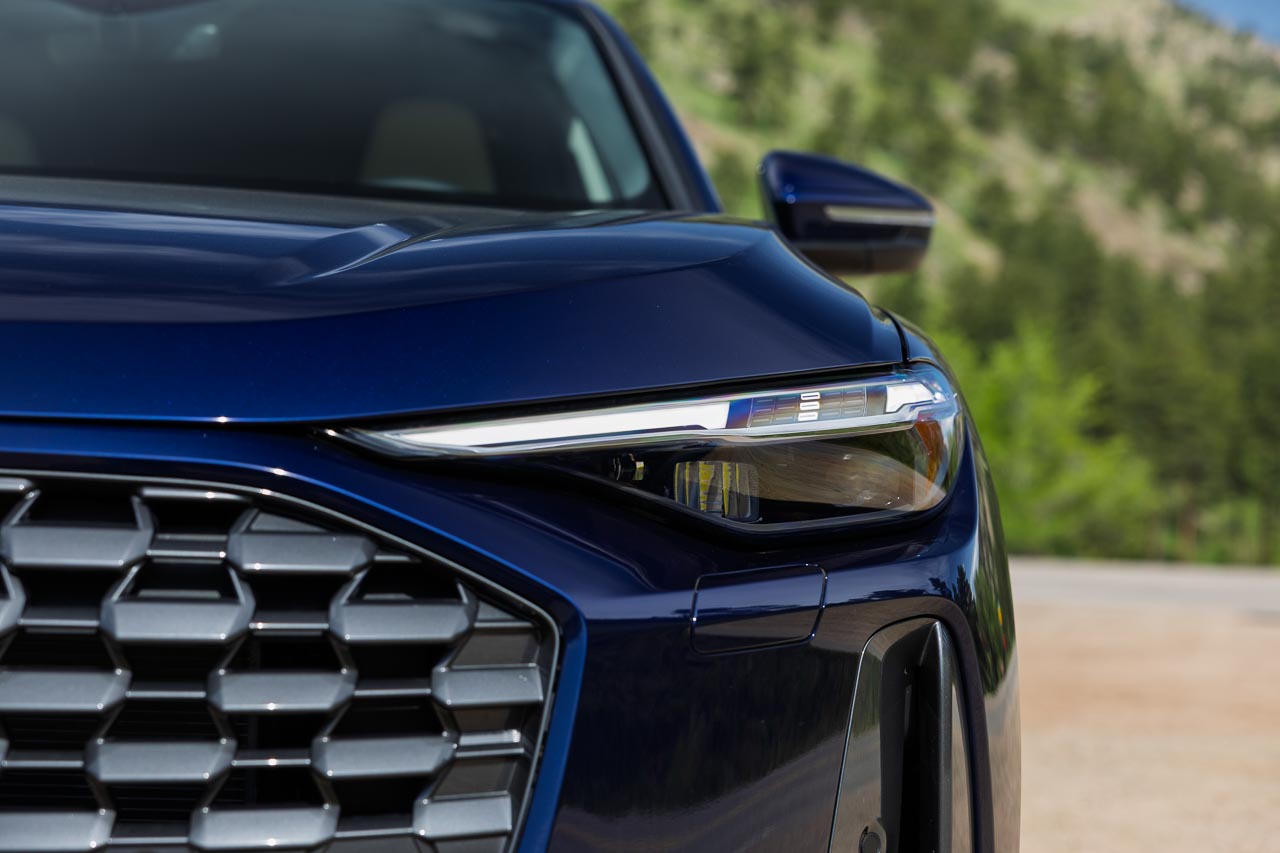
The OLED taillight technology provides superior visibility through enhanced contrast and brightness compared to traditional LED systems. The three-dimensional design creates visual depth while the digital segments enable dynamic animations during vehicle approach and departure. During our evening arrival in Aspen, these lighting elements created distinctive visual presence that enhanced both safety and aesthetic appeal.

The projection light system in the rear spoiler delivers increased visibility by projecting illumination into the upper rear window area, effectively enlarging the Center High Mount Stop Light area. This technology proved particularly valuable during mountain driving where following vehicles need maximum warning of braking or hazard situations.
The Coming Home and Leaving Home lighting sequences provide both functional illumination and visual appeal when approaching or departing the vehicle. These sequences utilize both the OLED taillights and projection systems to create distinctive animations that enhance security while demonstrating the advanced integration of the lighting systems.
Interior Technology: Ergonomic Intelligence
The Q5’s interior technology integration reflects careful consideration of human factors and usage patterns. The fully adjustable rear seat system allows the bench to slide fore and aft while tilting to optimize either cargo space or passenger comfort. This mechanical solution addresses real-world flexibility needs through engineering rather than electronic complexity, providing reliable functionality that doesn’t depend on software or electrical systems.
The center armrest houses an enlarged storage compartment compared to the previous generation, while numerous smaller storage areas accommodate everyday items like sunglasses, keys, and personal devices. The cooled wireless charging tray prevents device overheating while providing 15 watts of charging power, addressing a common problem with wireless charging systems in vehicles exposed to direct sunlight.
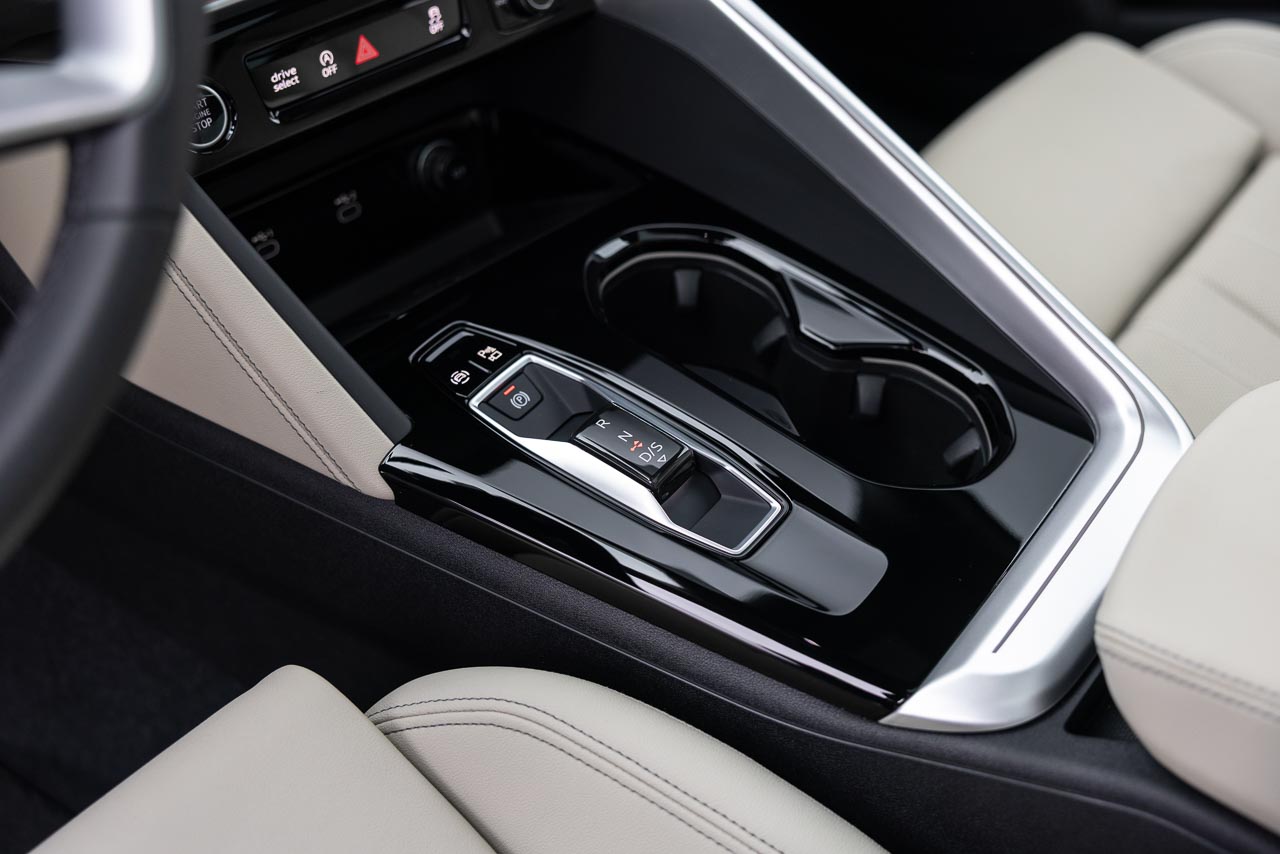
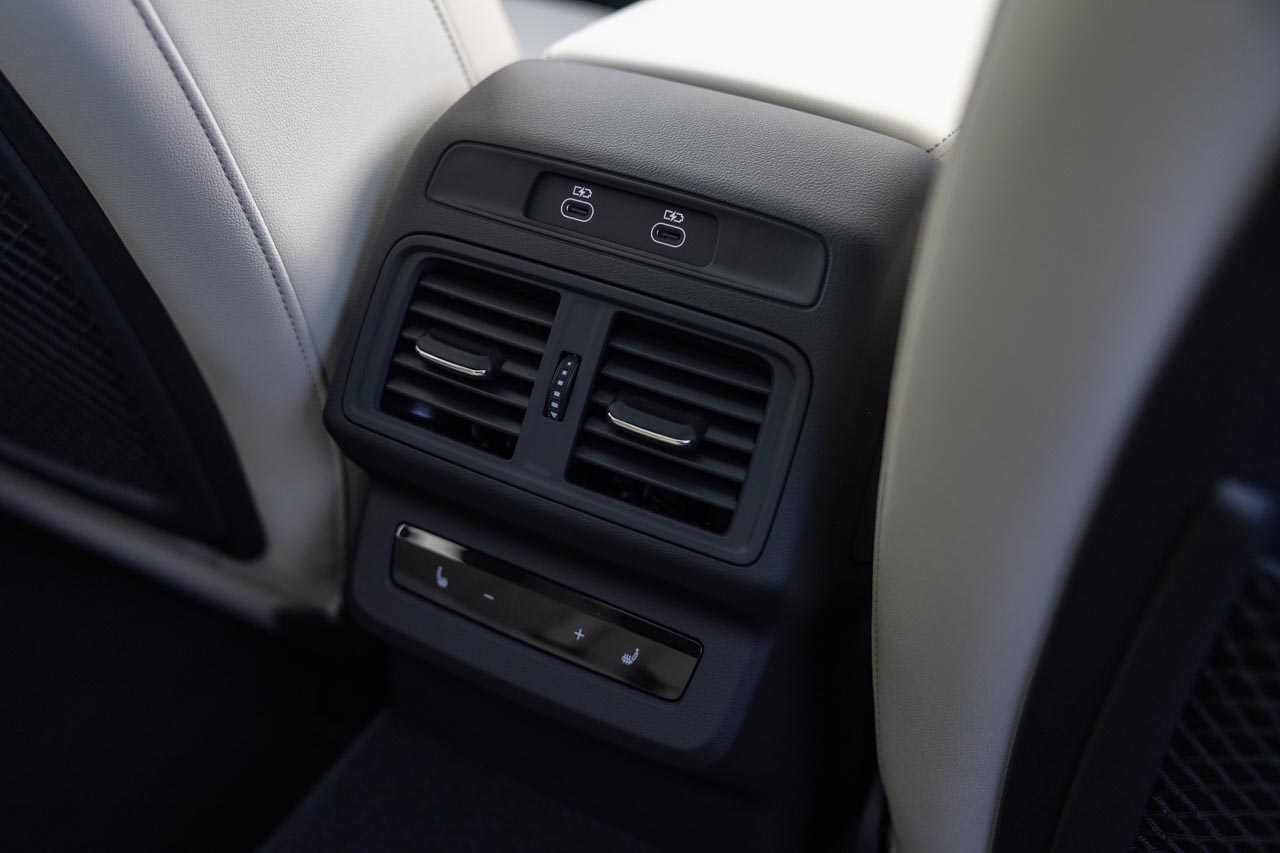
Climate control technology includes three-zone automatic systems that allow independent temperature control for driver, passenger, and rear occupants. During our drive through Colorado’s varying elevations and microclimates, this capability ensured passenger comfort regardless of external conditions or individual preferences. The system’s ability to maintain consistent temperatures during rapid elevation changes demonstrated advanced sensor integration and control algorithms.
The cargo area features power-operated rear seats that can be folded remotely, increasing cargo volume to 56.9 cubic feet in standard Q5 models or 53.1 cubic feet in Sportback variants. The luggage compartment cover stores in a dedicated location under the cargo floor, providing additional space when needed while maintaining easy access to the cover when required.
Performance Integration: Technology Serving Function
The SQ5’s performance-oriented technology demonstrates how electronic systems can enhance rather than replace mechanical capability. The sport adaptive air suspension provides variable ride characteristics that adapt to driving conditions and selected drive modes, offering comfort during highway cruising and control during spirited mountain driving. During our most demanding sections, the air suspension automatically adjusted to maintain optimal contact patch and body control, allowing aggressive cornering speeds while maintaining the composure expected from a high-end SUV.
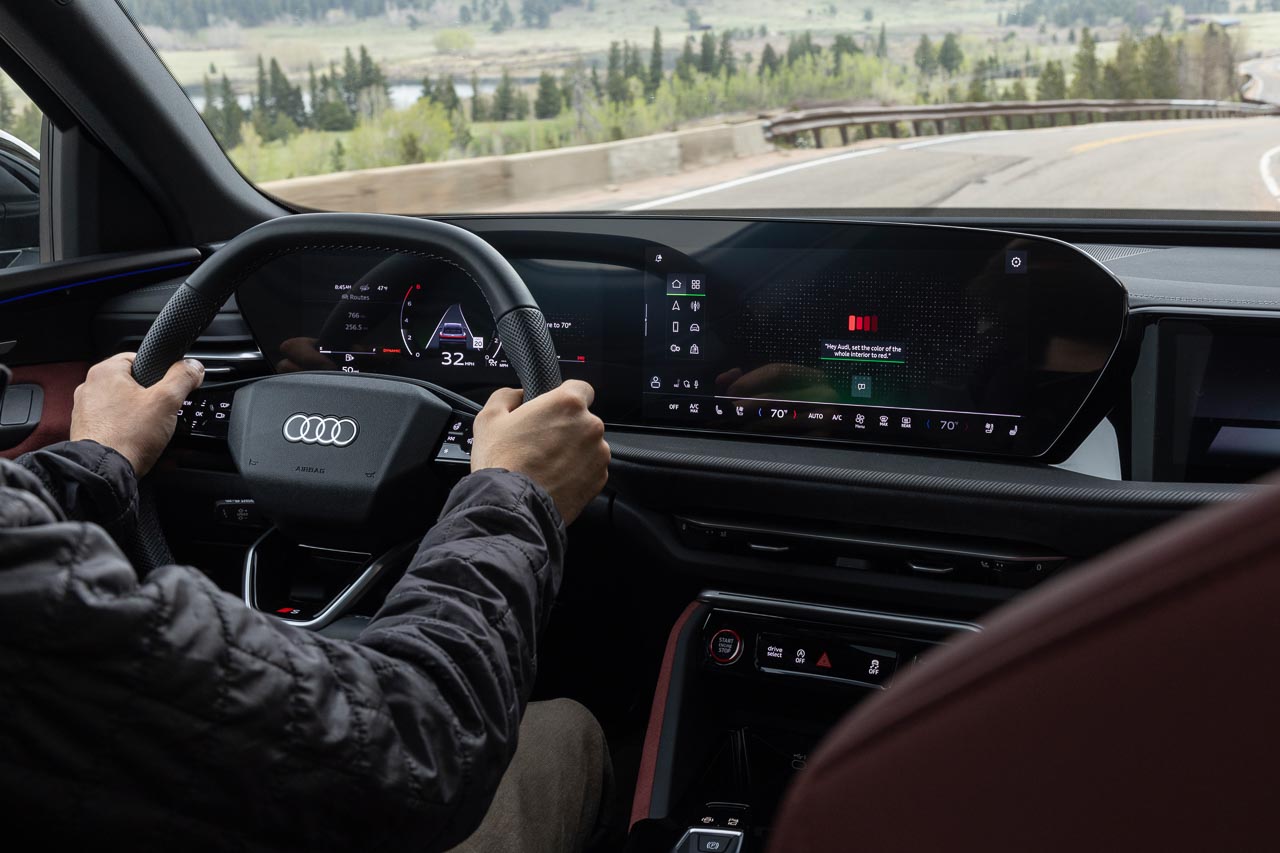
The drive select system offers multiple modes including Comfort, Auto, Dynamic, and Individual settings that adjust engine response, transmission behavior, suspension characteristics, and steering feel. During our mountain drive, these modes provided appropriate vehicle character for different driving situations without requiring manual adjustment of individual systems. Switching from Comfort to Dynamic mode transformed the vehicle’s personality completely, firming the suspension, sharpening throttle response, and weighting the steering for more aggressive driving.
Acceleration performance varies dramatically between the two models, with the Q5 delivering smooth, linear power that builds confidence through its predictability. The turbocharged four-cylinder responds immediately to throttle inputs, providing strong acceleration that feels effortless rather than aggressive. During our acceleration testing on straight mountain sections, the Q5 demonstrated impressive performance for its displacement, reaching highway speeds with authority while maintaining the refinement expected in this segment. The engine pulls cleanly from low rpm, eliminating the need for frequent downshifts during mountain driving.
The SQ5’s V6 transforms every acceleration event into a performance experience, with immediate torque delivery that creates genuine excitement. The engine’s broad power band provides flexibility during technical driving, delivering strong acceleration from any rpm without requiring downshifts to access the power. During our most aggressive driving sections, the V6 pulled strongly through the entire rev range, creating the kind of effortless performance that makes challenging mountain roads genuinely enjoyable. The Variable Turbine Geometry system provides immediate throttle response without the lag that typically characterizes turbocharged engines.
Handling dynamics reveal the true character of both vehicles, with the Q5 providing composed, predictable behavior that inspires confidence without intimidation. The steering communicates road surface changes clearly while maintaining the comfort expected in daily driving. Body roll remains well controlled despite the higher center of gravity, allowing aggressive cornering while maintaining passenger comfort. The quattro all-wheel drive system distributes power effectively to maintain traction without intrusive electronic interventions. During our most challenging cornering sections, the Q5 maintained excellent composure, rotating naturally through turns while providing the stability that SUV buyers expect.
The SQ5’s sport-tuned suspension and larger wheels create a more focused driving experience, with reduced body roll and improved steering precision. The vehicle responds more aggressively to steering inputs while maintaining the stability that defines the SUV segment. During our most challenging driving sections, the SQ5 demonstrated remarkable composure, allowing cornering speeds that would challenge many sports cars while maintaining the practicality that SUV buyers demand. The sport rear differential actively manages torque distribution between rear wheels to enhance traction and stability during cornering, proving particularly valuable during mixed surface conditions.
The electronic stability control system integrates with the quattro all-wheel drive and differential systems to provide comprehensive traction management. During our drive through varying road conditions, these systems worked together transparently to maintain vehicle control without intrusive interventions that disrupt the driving experience. The system’s intelligence became apparent during mixed surface conditions, where the electronics managed power distribution to maintain traction without drawing attention to their operation.
Technology Value Proposition
The Q5’s technology integration comes at price points that reflect genuine value rather than exclusivity positioning. The base Q5 Premium includes the complete Digital Stage system, Matrix-Design LED headlights, and comprehensive safety features, providing access to advanced technology at accessible pricing levels.
The progression through Premium Plus and Prestige trim levels adds technology features like the OLED taillights, enhanced audio systems, and additional convenience features without fundamentally changing the core technology experience. This approach ensures that technology benefits reach a broad range of buyers rather than being restricted to top trim levels.
The SQ5’s performance technology comes at pricing that reflects the additional capability provided by the air suspension, sport differential, and enhanced powertrain systems. The technology integration enhances the performance experience rather than simply adding complexity, creating value through improved capability rather than feature proliferation.
Mountain Testing Validation
Our 130-mile route from Crested Butte through Buena Vista to Aspen provided comprehensive validation of the Q5’s technology systems under demanding real-world conditions. The elevation changes, varying road surfaces, and challenging weather conditions tested every aspect of the vehicle’s electronic systems while demonstrating how technology can enhance rather than complicate the driving experience.
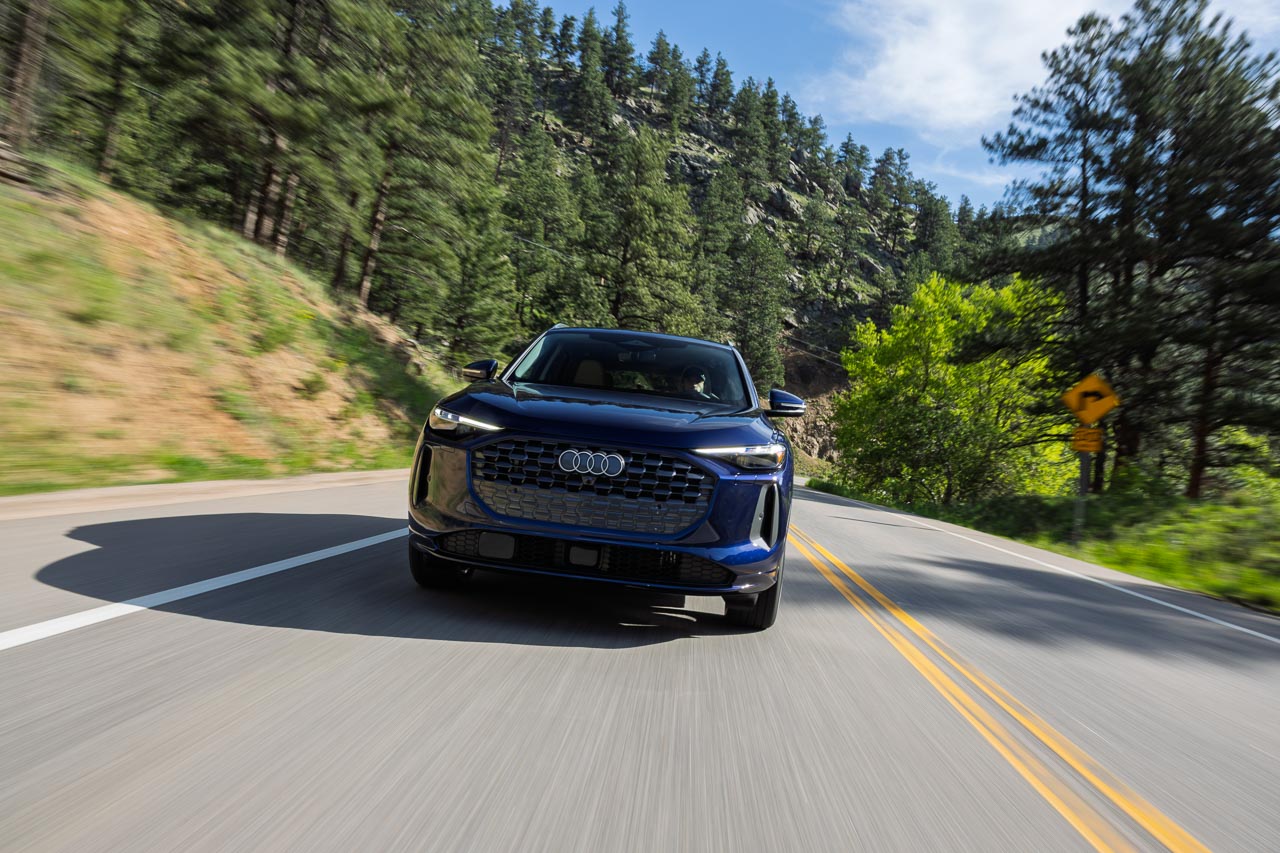
The Digital Stage system maintained perfect functionality throughout our drive, with the OLED displays providing consistent readability and the touch interfaces responding accurately even while wearing gloves during cold mountain conditions. The connectivity systems maintained communication capabilities throughout most of our route, while the navigation system provided reliable guidance even when cellular coverage became intermittent.
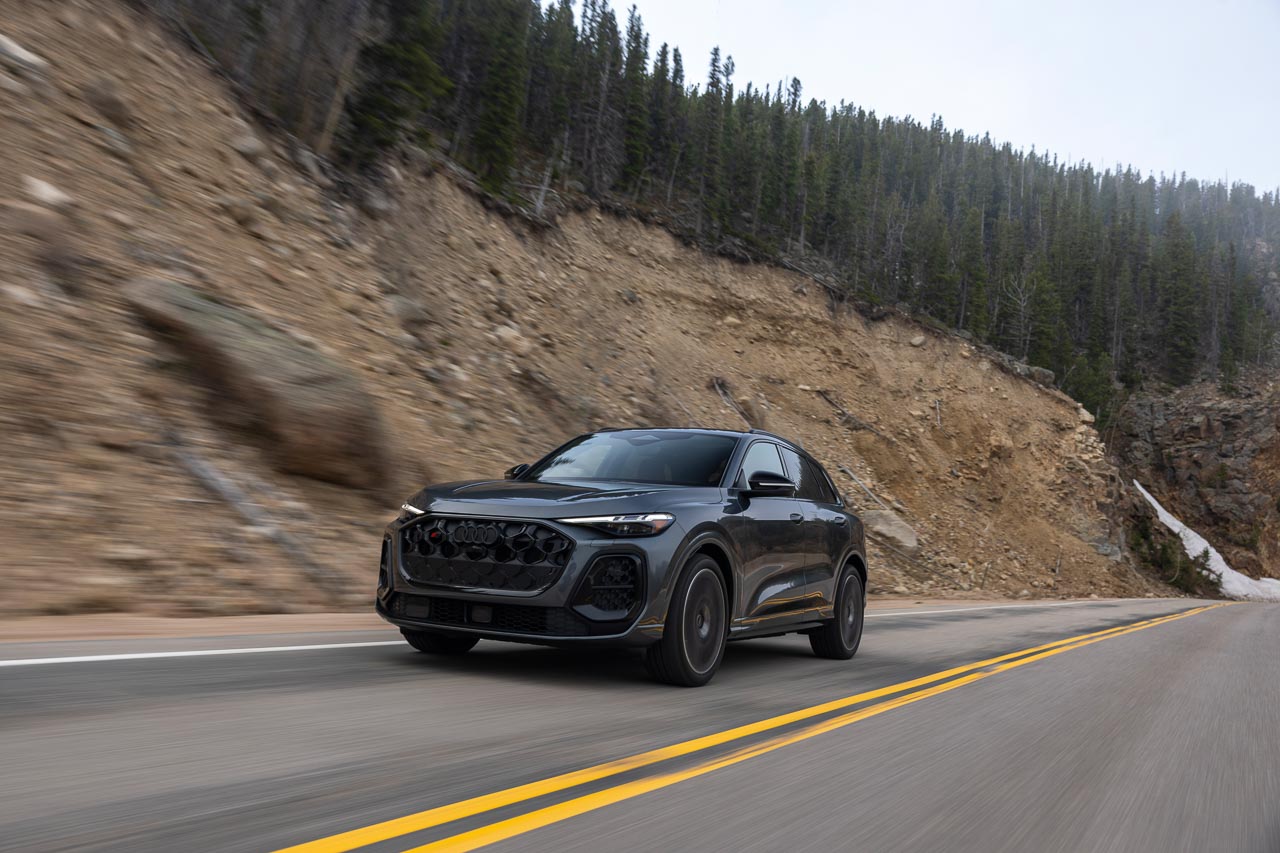
The powertrain technology delivered consistent performance across varying altitudes and road conditions, while the chassis systems adapted transparently to changing driving requirements. The safety systems provided valuable assistance without intrusive interventions, while the lighting technology enhanced both visibility and visual appeal throughout our journey.
The 2025 Audi Q5 and SQ5 demonstrate how automotive technology can serve real-world driving needs rather than simply providing showroom appeal. The integration of advanced systems creates vehicles that enhance the driving experience while maintaining the reliability and usability that mountain driving demands. For tech enthusiasts who require capability alongside innovation, the Q5 family provides compelling evidence that automotive technology has reached genuine maturity.


















